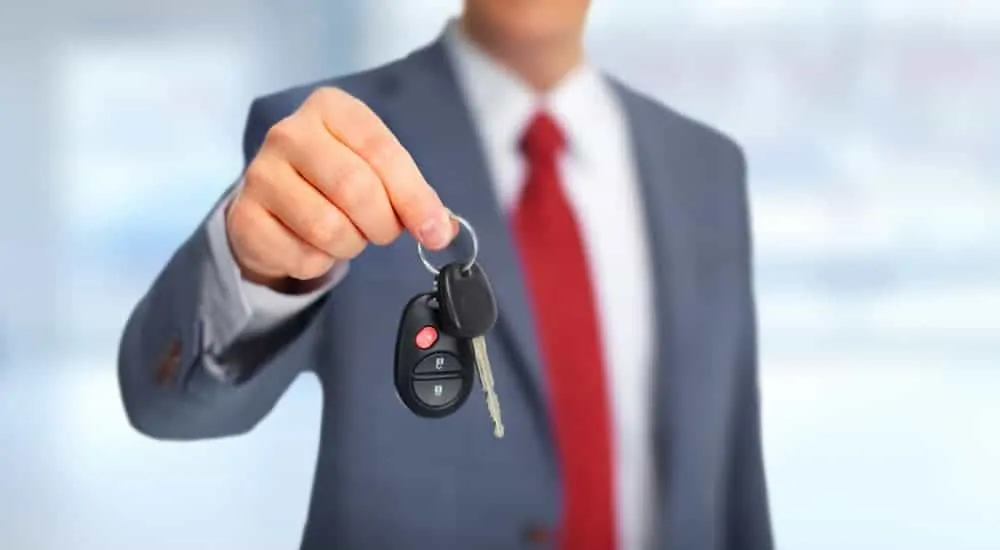Are you looking to maximize your next car purchase? Do you not want to spend a fortune on a new car? No doubt, visiting used car dealerships to purchase an affordable used car can be an excellent way to save money. It’s no wonder that financial experts tend to recommend this route to anyone looking to maximize their budget when searching for a car.
However, choosing the wrong dealership or wrong vehicle can end up costing you, especially when it comes to financing and repair expenses. While getting a used car is a great way to save, you want to make sure you’re getting your money’s worth. How do you ensure that you’re not left with the short end of the stick on your next used car deal? We’ve got a few necessary steps for you before you visit your used car dealership!
What the Best Looks Like
Finding the best used car dealership requires time and effort, but you’ll discover it’s well worth it when the time comes to purchase. You will find yourself avoiding so much headache and heartache when you interact with a respectful and responsible used car dealership. What does this mean? The best used car dealerships are more interested in creating a great long-term relationship than using you as a means of meeting a sales quota.
This is not merely the salesman’s job but the responsibility of everyone from the head manager to the service technicians. They should ensure that you avoid getting swept away by surface details, and they should provide you a balanced view of vehicles, even when it means dissuading you from vehicles that don’t truly meet your goals. A good dealership will provide you with knowledgeable advice about maintenance and care. They will commit to treat you fairly and respectfully so that you’ll not only return when you’re ready to trade it in, but you’ll recommend them to your friends and family.
Finding the Best Dealership
We know what you’re thinking. Finding the best sounds excellent, but how does one go about tracking down one? There are so many used car dealerships available, how do you distinguish between them? One of the most significant indicators of a good dealership is past ratings. You can accomplish this in many ways.
First, ensure that the dealership is licensed. Next, check the Better Business Bureau website for formal complaints lodged against them. Other great places to read what people are saying about your local used car dealerships are social media and business sites such as Facebook and Yelp. Simple word of mouth can also be a great method to discover the best dealerships.
Second, find out how long the dealership has been around. Longevity can tell you so much. A dealership with a poor reputation isn’t likely to survive in such a competitive marketplace. Price is another essential consideration. One advantage that you have going in is that vehicles have depreciated by the mere fact of their age, which gives you some leverage in bargaining an excellent price for a used vehicle still in superb condition.
It’s also essential that you consider the types of cars the dealership sells and whether they suit your needs in terms of size, fuel efficiency, style, etc. Customer services offered by the dealership are another huge consideration. Finally, consider whether the dealership is part of a big name franchise (Such as Chevrolet, Ford, Honda, or Toyota) as these likely offer certified vehicles with extended manufacturer warranties as well as the normal non-certified vehicles. Independent dealerships generally provide prices that are easier on the wallet but may lack other perks like extended warranties, automaker support, etc.
At the Dealership
Once you believe you’ve found a good, reputable used car dealership, take a look around on arrival. This may seem obvious but how the dealership is maintained on the surface speaks volumes. Other things to look for are how you are responded to. Do salespeople pounce on you as soon as you arrive, or are they more professional and respectful?
Does the dealership include a maintenance shop? Free Wi-Fi, children’s play areas, and transportation options via shuttles and loaner cars while cars are being services are other considerations. Are the mechanics certified? These are questions you’ll want to bring up during your visit.
Do you prefer certified pre-owned (CPO), which are sold from dealers of the same brand and are known for extensive inspections? How about non-certified vehicles, which are not given the same attention as certified pre-owned but still receive an assessment before going on sale? What kinds of payment plans are available, and how are the rates compared to other facilities for the vehicle you’ve chosen? What financing options are available?
Warranties, post-sale policies, amenities, and other available facilities at the dealership are also useful final considerations. What are their return policies? Finally, make sure to clear any large payments with your bank before attempting to make a large purchase so that you don’t get an unexpected freeze should you pay by card.
Recalls and Repairs
Unfortunately, it’s not illegal for car dealerships to offer cars that are currently recalled or need repairs. One way that you can safeguard yourself is to check the car’s vehicle identification number (VIN) on the National Highway Traffic Safety Administration’s website for any recall information. This is a necessary step to ensure that you’re never left in the dark about whether or not the vehicle has any safety issues.
An additional step is to ensure that you receive information about necessary repairs and are offered a warranty on the vehicle. Always test drive the vehicle a reasonable distance before purchasing to ensure that the car looks and feels normal on the road. This can help you stay abreast of any issues with the purchase before it’s made!
Avoiding the Halo Effect
There is no perfect vehicle. Check out reputable reference guides, such as KBB, to ensure that you understand car ratings, advantages, and disadvantages. Does it get great gas mileage but lag a bit in acceleration? Is it a gas guzzler with a lovely leather interior? Research seems like an obvious tip, but it’s too easy to get caught up in a vehicle’s surface attributes on the lot.
This is called the “Halo Effect,” which means that one is so in love at first sight that all negative attributes are ignored. A necessary step in the used car buying process is to get a balanced view of the vehicle. If you can do this before you make it onto the lot, all the better! Doing your research is the best way to safeguard yourself against the “Halo Effect” at the dealership.
After Your Used Car Purchase
Congratulations on finding a reputable dealership, a great vehicle at a great price, and services that meet your needs! That is no small feat. We can assure you, most of the work is taken care of at this point! Next, you’ll want to hang on to important documents and contact information, register your vehicle, obtain tags and insurance, and make sure that you’re following a regular maintenance schedule.
Some other significant next steps are to show some love and make sure your dealership knows they’re doing a great job. Feel free to share constructive criticism, both with the dealer and others, via online or face-to-face reviews. Reviews are a tremendous pay-it-forward gesture documenting the reality of your used car dealership. Finally, relax and enjoy all the perks of the new vehicle you worked so hard for!





